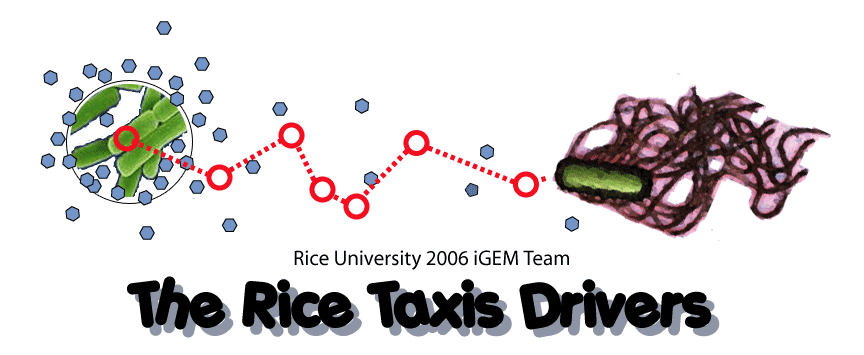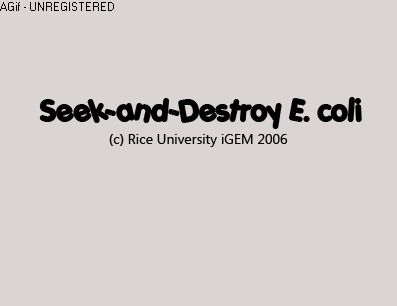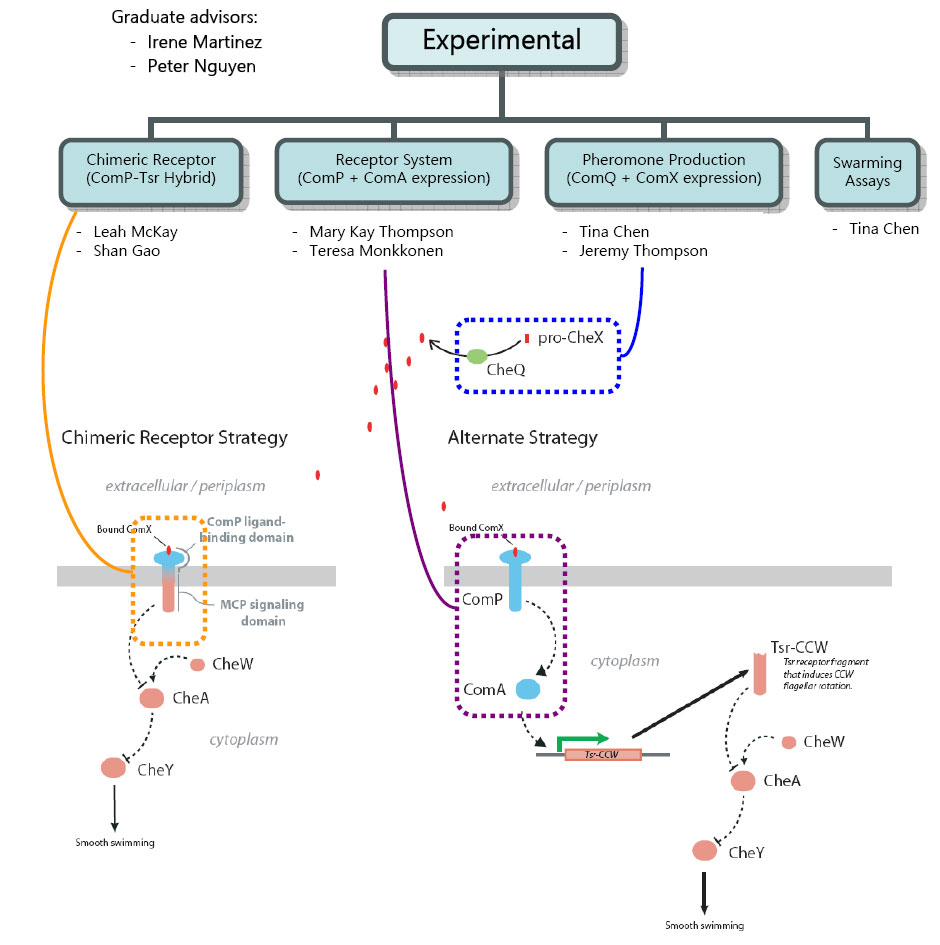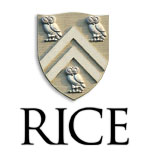Rice University 2006
From 2006.igem.org
Contents |
Welcome
Welcome to the Rice International Genetically Engineered Machine (iGEM) Team Wiki. We are participating in the iGEM Competition for the first time so we are in the process of building our team. Currently, we are developing a 'quorumtaxis' system, which integrates the quorum-sensing and chemotaxis systems. Bacteria engineered with this quorumtaxis system will be able to move towards high concentrations of quorum pheromone. The Rice iGEM Team is divided into three groups: Experimental, Theory, and Modeling. Explore our website or contact us, as we will be constantly updating with the latest developments in the project.
Undergraduate Students
Chris Conner - Junior, Biochemistry and Computational & Applied Mathematics
Dario Prieto - Junior, Chemical & Biomolecular Engineering
Miinkay Yu - Junior, Chemical & Biomolecular Engineering
Tina Chen - Senior, Kinesiology
Thomas Segall-Shapiro - Freshman
Teresa Monkkonen - Senior, Biochemistry
Mary Kay Thompson - Senior, Biochemistry
Shan Gao - Senior, Biochemistry
Jeremy Thompson - Senior, Biochemistry
Leah McKay - Senior, Biochemistry
Graduate Students
Bibhash Mukhopadhyay - Molecular & Cell Biology, Baylor College of Medicine
Christie Peebles - Bioengineering
Irene Martinez - Bioengineering
Jay Raol - Computational & Applied Mathematics
Peter Nguyen - Biochemistry & Cell Biology
Advisors
Beth Beason - Biochemistry & Cell Biology
George Bennett - Biochemistry & Cell Biology
Jonthan Silberg - Biochemistry & Cell Biology
Ka-Yiu San - Bioengineering
Ken Cox - Chemical & Biomolecular Engineering
Steve Cox - Computational & Applied Mathematics
PROJECT PROPOSAL
Quorumtaxis -- The integration of quorum-sensing and chemotaxis pathways, to produce an E. coli strain which is capable of detection and movement towards concentrations of the B. subtilis quorum phermone, ComX. Upon successful quorumtaxis towards the target, the E. coli will produce a signaling response (e.g., GFP production) or a kill response (e.g., the expression of gram-positive lethal proteins). A detailed propsal outline is provided in the link below.
EXPERIMENTAL GROUP
Welcome! The Rice iGEM E-group is tasked with the construction of a wholly novel phenotype -- 'quorumtaxis'. More about the specifics of this project can be found in the 'Project Proposals' section of the Rice iGEM page. Currently, we have 6 undergraduate students working on this project, with two graduate students as advisors.
Experimental Work
MODELING GROUP
The mission of the modeling groups is to help completely characterize "Quorumtaxis" for use as a biobrick. This means characterizing the transfer function, latency, etc. In our method, comX particles will act as an atractant that will effect the chemotaxtic pathway via the chimeric comP/MCP membrane protein. Therefore, in order to model this event, we will focu on modeling chemotaxis within bacteria. We have identified the following goals.
- Model the response of a single bacterium to stimulus
- Model the phenotypic response of a bacterial colony
- Understand the effect of a comP/MCP chimeric protein on the chemotaxtic pathway
- Develop a theoretical framework of integrating the kill response in a single bacterium
- Simulate the kill behavior for a bacterial colony
1
In a single bacteria, chemotaxis can be consid
We have been working from Spiro and Barakai as the main source for developing our own model of bacteria. Using Spiro, we have developed the backbone of our model. However, in order to model certain asp
Synthetic Biology Journal Club
19 June
13 June
- J. Raol and D. Prieto described the 2005 iGEM projects from Caltech and Cambridge.
5 June
- K.-Y. San presented Programmable cells: Interfacing natural and engineered gene networks (Kobayashi, H. et al., PNAS 101: 8414-8419, 2004).
- P. Nguyen presented Environmentally controlled invasion of cancer cells by engineered bacteria (Anderson, J. C. et al., J. Mol. Biol. 355: 619-627, 2006).
30 May
- J. Silberg presented Directed evolution of a genetic circuit (Yokobayashi, Y. et al., PNAS 99: 16587-16591, 2002) and Programmed population control by cell-cell communication and regulated killing (You, L. et al., Nature 428: 868-871, 2004).
- S. Cox presented Construction of a genetic toggle switch in Escherichia coli (Gardner, T. et al., Nature 403: 339-342, 2000).
[Rice University]
Here's what we'd like to see on your wiki page(s):
- A list of all team members, their roles, and email addresses
- Overview of project(s), including schematics and figures
- Ongoing data/updates about project(s), including schematics, figures, test data, and biobrick parts used
- Some photos of your team, facilities, institution, etc.
- Optionally, anything that broadcasts your team's personality, spirit, sense of fun, or coolness...



